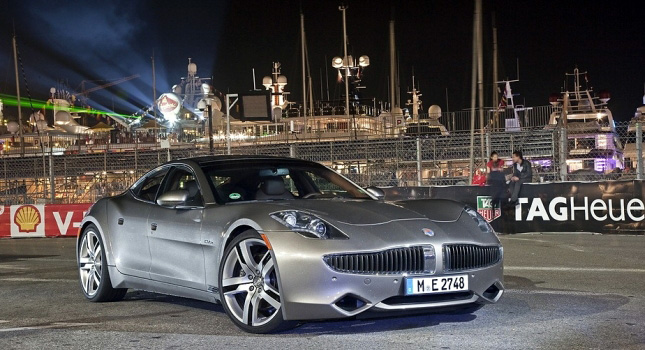While currently under the threat of bankruptcy, Fisker Automotive is not dead – yet. Who would you think is the person who wants to save the company the most? Why, of course, it’s the automaker’s founder, Henrik Fisker, who resigned from his position at the helm of Fisker after not being able to resolve his differences with the members of the board, regarding strategy and future ambitions – or at least that’s what we’re told.
This renewed interest from Mr. Fisker is welcome, because sensing the start of decay from within, vultures began circling the company months ago, ever since it became known that not a single car had been built since July of 2012.
VL Productions (creators of the Destino), as well as China’s Wanxiang (buyers of bankrupt A123 Systems, the battery pack manufacturers for the Karma) tepidly raised their hand, and they would have swooped in for the final kill if the company quietly went bankrupt and didn’t have to pay back the Department of Energy (DoE) $171- (€132-) million loan, as well as other outstanding debts to various suppliers and service providers.
In order to prevent bankruptcy, Henrik Fisker has now teamed up with Hong Kong billionaire Richard Li, who is apparently interested in paying off the debt, but not in full. Li’s group reportedly offered 17.5 cents on the dollar, according to a lengthy report on Reuters, which means that they would end up paying between $25- to $30-million -(€19- to €23-million). If the Energy Department accepts the offer, then they will recover some of the invested taxpayer dollars, which does sound better than nothing.
If the company does go bankrupt, then it could be sold off in parts and not be one single entity, therefore making it almost impossible for anybody to make it work the same way it did prior to going under. It will get new management, new strategies, new staff, and all that will be left is the name and a few shoddily built Karmas, which are great to look at but never became the commercial success beckoned by all those who backed it. Even the DoE, which awarded the company a $529- (€409-) million in 2009, received less than half of that, but the company was seen as eligible, promising and suitable to get that kind of money, which ultimately proved not to be the case.
By Andrei Nedelea
PHOTO GALLERY













